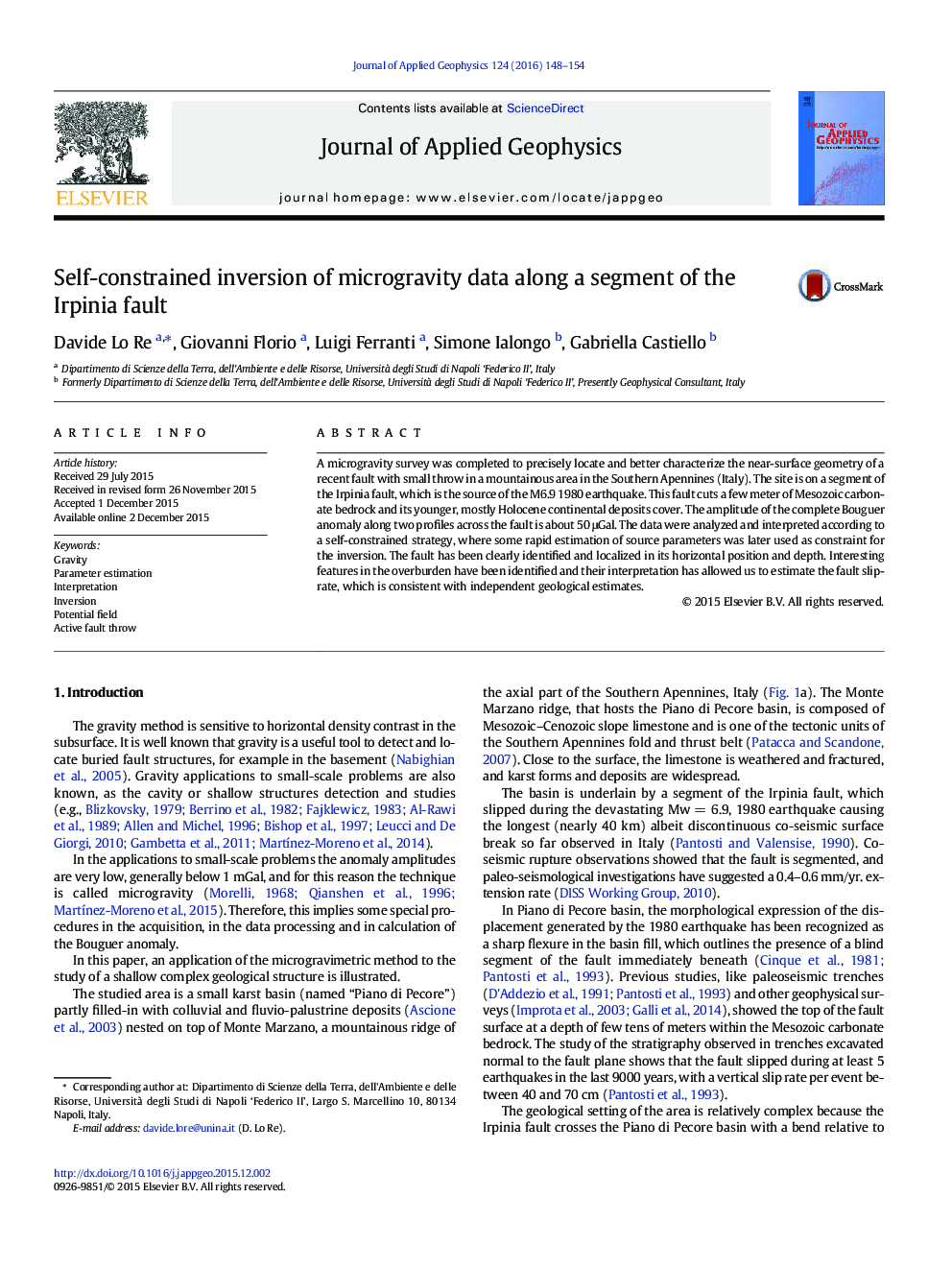| Article ID | Journal | Published Year | Pages | File Type |
|---|---|---|---|---|
| 4739870 | Journal of Applied Geophysics | 2016 | 7 Pages |
•A self-constrained inversion of gravity data in active fault area is proposed.•The parameters that constrain the inversion come from the analysis of the anomalies.•The obtained models show both the shape of the fault and the overlying sediments.•Reasonable slip rate values can be evaluated on the obtained density models.
A microgravity survey was completed to precisely locate and better characterize the near-surface geometry of a recent fault with small throw in a mountainous area in the Southern Apennines (Italy). The site is on a segment of the Irpinia fault, which is the source of the M6.9 1980 earthquake. This fault cuts a few meter of Mesozoic carbonate bedrock and its younger, mostly Holocene continental deposits cover. The amplitude of the complete Bouguer anomaly along two profiles across the fault is about 50 μGal. The data were analyzed and interpreted according to a self-constrained strategy, where some rapid estimation of source parameters was later used as constraint for the inversion. The fault has been clearly identified and localized in its horizontal position and depth. Interesting features in the overburden have been identified and their interpretation has allowed us to estimate the fault slip-rate, which is consistent with independent geological estimates.
Graphical abstractFigure optionsDownload full-size imageDownload as PowerPoint slide
